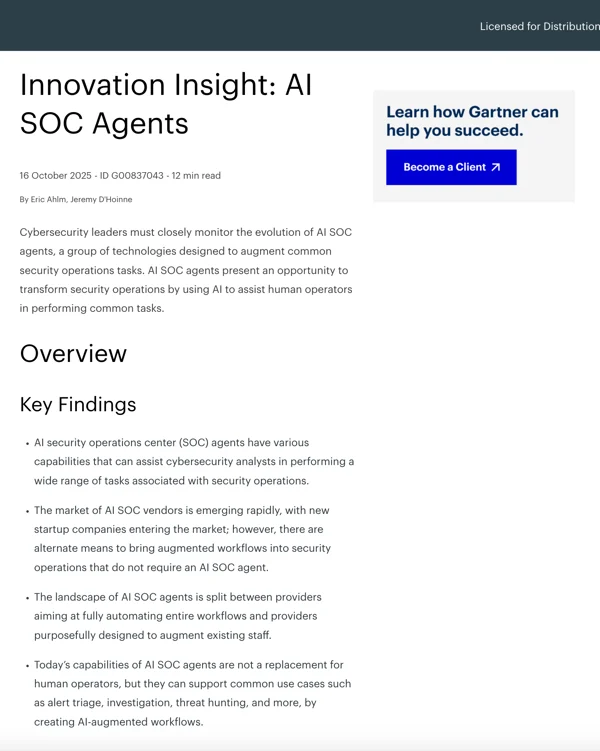
-min.webp)
Security operations are drowning in alerts. Manual triage eats up analyst time, drives burnout and still leaves real threats slipping through the cracks. Traditional tools like SIEMs, SOARs and reactive AI copilots either generate more noise or wait for human prompts.
Agentic Security changes the game. By applying autonomous AI agents to your alert pipeline, you get human-like investigations at machine speed, 24/7 fatigue‑free coverage, and real‑time response actions.
Agentic Security applies autonomous AI agents to your SOC workflows. These agents ingest every alert, filter out false positives, gather full context and then recommend next‑step actions or compile detailed investigation reports for your analysts. Unlike AI copilots, they plan, reason and act without a human prompt at each step.
{{ebook-cta}}
Monitor key SOC metrics and iterateTrack mean time to investigate (MTTI), alerts handled autonomously, false‑positive reduction, accuracy, and analyst workload. Tweak and expand scope over time.
How is Agentic AI different from a security copilot?
Agentic AI initiates investigations autonomously; copilots wait for human prompts and return context on demand.
Does Agentic AI require predefined playbooks?
Agentic AI does not require predefined playbooks; it builds a plan in real time using LLM reasoning and live telemetry.
Where should teams start with Agentic AI?
Teams should begin with autonomous alert triage and investigation; once trust is established, extend to guided response recommendations and alert closure.
Is Agentic AI risky to deploy?
Deployment risks are mitigated through guardrails such as human‑in‑the‑loop review, transparent reasoning and evidence‑backed decisions.
How does Agentic AI integrate with existing SOC tools?
Agentic AI integrates with SIEM, EDR, XDR and threat intel platforms via APIs or connectors, pulling logs, running queries and compiling findings—no stack replacement required.
What SOC metrics improve after deploying Agentic AI?
Organizations typically see a 75–90% reduction in mean time to investigate, a 90+% drop in alerts reaching human review, and measurable decreases in overtime and burnout.
Ready to see Agentic Security in action? Request a demo of Prophet AI today and transform your SOC into a 24/7 proactive threat‑hunting powerhouse.
Get Gartner's guidance on evaluating and adopting AI SOC agents

